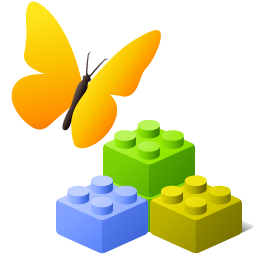sqlite可视化工具(SqliteStudio)
v3.3.3 绿色汉化版
- 软件大小:4.25 MB
- 软件语言:中文
- 软件类型:国产软件 / 数据库类
- 软件授权: 免费软件
- 更新时间:2022-02-28 14:42:22
- 软件等级:

- 软件厂商: -
- 应用平台:WinAll, WinXP
- 软件官网: http://www.itmop.com/
相关软件

Navicat Cracker v16.0.10 激活码注册工具
16.00 KB/中文/4.0

pinyin4j-2.5.0.jar(java汉字转拼音)免费版
186.00 KB/中文/10.0

SQLite Expert Pro(SQLite可视化管理工具)v5.4.4.539 汉化特别版
83.00 MB/英文/10.0

SQLite Expert去广告版v5.3.5.476 清爽版
83.00 MB/中文/10.0

MySQL密码修改软件绿色版
5.00 KB/中文/10.0
软件介绍人气软件精品推荐相关文章网友评论下载地址
sqliteStudio中文版是一款 Sqlite数据库可视化工具,是使用Sqlite数据库开发应用的必备软件,软件无需安装,下载后解压即可使用,很小巧但很了用,绿色中文版本。比起其它SQLite管理工具,我喜欢用这个。很方便易用,不用安装的单个可执行文件,支持中文。欢迎来到IT猫扑网下载!
SqliteStudio介绍
SQLiteStudio 是一个跨平台的 SQLite 数据库的管理工具,采用 Tcl 语言开发。
SQLiteStudio的特色
功能完善的sqlite2和sqlite3工具,视图编码支持utf8。
支持导出数据格式:csv、html、plain、sql、xml,
可同时打开多个数据库文件
支持查看和编辑二进制字段
使用方法
选择数据库--->添加数据库--->选择你的本地数据库,并点击+增加就可以查看数据库了。


SqliteStudio在Android程序中使用已有的SQLite数据库
1. 准备SQLite database文件
假设你已经创建了一个sqlite数据库,我们需要对其进行一些修改。
(译者注:这里原文是推荐了一个SQLite数据库管理软件,这个我觉得可以随自己的喜好,最Windows下面有多款可视化的SQlite数据库管理软件,可以方便的读取,编辑数据库,例如我用的是sqlitestudio
打开数据库,添加一个新的table “android_metadata",插入一行数据,具体的SQL如下:
[sql] view plaincopyprint?在CODE上查看代码片派生到我的代码片
CREATE TABLE "android_metadata" ("locale" TEXT DEFAULT 'en_US')
INSERT INTO "android_metadata" VALUES ('en_US')
(译者注:上面两行是表明需要进行的操作,具体可以直接在sqlitesstudio中完成)
然后你需要对你数据表格的primary id 列重命名为 “_id”,这样Adroid会知道怎么对id列进行绑定,你可以很容易的在SQlite数据库管理软件中进行列编辑。
这两步之后,你的sqlite数据库文件就准备好了。
(译者注:这里我保留了id列,即没有对其进行重命名,测试证明也是没有问题的)
2. 在你的Android程序中复制,打开以及访问数据库
现在把你上一步准备好的数据库文件放在“assets”文件夹下面,然后通过继承 SQLiteOpenHelper类来创建一个Database Helper类,
你的DataBaseHelper类大致可以如下:
public class DataBaseHelper extends SQLiteOpenHelper{
//The Android's default system path of your application database.
private static String DB_PATH = "/data/data/YOUR_PACKAGE/databases/";
private static String DB_NAME = "myDBName";
private SQLiteDatabase myDataBase;
private final Context myContext;
/**
* Constructor
* Takes and keeps a reference of the passed context in order to access to the application assets and resources.
* @param context
*/
public DataBaseHelper(Context context) {
super(context, DB_NAME, null, 1);
this.myContext = context;
}
/**
* Creates a empty database on the system and rewrites it with your own database.
* */
public void createDataBase() throws IOException{
boolean dbExist = checkDataBase();
if(dbExist){
//do nothing - database already exist
}else{
//By calling this method and empty database will be created into the default system path
//of your application so we are gonna be able to overwrite that database with our database.
this.getReadableDatabase();
try {
copyDataBase();
} catch (IOException e) {
throw new Error("Error copying database");
}
}
}
/**
* Check if the database already exist to avoid re-copying the file each time you open the application.
* @return true if it exists, false if it doesn't
*/
private boolean checkDataBase(){
SQLiteDatabase checkDB = null;
try{
String myPath = DB_PATH + DB_NAME;
checkDB = SQLiteDatabase.openDatabase(myPath, null, SQLiteDatabase.OPEN_READONLY);
}catch(SQLiteException e){
//database does't exist yet.
}
if(checkDB != null){
checkDB.close();
}
return checkDB != null ? true : false;
}
/**
* Copies your database from your local assets-folder to the just created empty database in the
* system folder, from where it can be accessed and handled.
* This is done by transfering bytestream.
* */
private void copyDataBase() throws IOException{
//Open your local db as the input stream
InputStream myInput = myContext.getAssets().open(DB_NAME);
// Path to the just created empty db
String outFileName = DB_PATH + DB_NAME;
//Open the empty db as the output stream
OutputStream myOutput = new FileOutputStream(outFileName);
//transfer bytes from the inputfile to the outputfile
byte[] buffer = new byte[1024];
int length;
while ((length = myInput.read(buffer))>0){
myOutput.write(buffer, 0, length);
}
//Close the streams
myOutput.flush();
myOutput.close();
myInput.close();
}
public void openDataBase() throws SQLException{
//Open the database
String myPath = DB_PATH + DB_NAME;
myDataBase = SQLiteDatabase.openDatabase(myPath, null, SQLiteDatabase.OPEN_READONLY);
}
@Override
public synchronized void close() {
if(myDataBase != null)
myDataBase.close();
super.close();
}
@Override
public void onCreate(SQLiteDatabase db) {
}
@Override
public void onUpgrade(SQLiteDatabase db, int oldVersion, int newVersion) {
}
// Add your public helper methods to access and get content from the database.
// You could return cursors by doing "return myDataBase.query(....)" so it'd be easy
// to you to create adapters for your views.
}
就这样。
现在你可以创建一个新的DataBaseHelper实例,然后调用createDataBase(),然后再调用openDataBase()方法,记住修改DB_PATH字符串中“YOUR_PACKAGE”为你真正的package名称(也就是说com.examplename.myapp)
以下是示范代码:
[java] view plaincopyprint?在CODE上查看代码片派生到我的代码片
...
DataBaseHelper myDbHelper = new DataBaseHelper();
myDbHelper = new DataBaseHelper(this);
try {
myDbHelper.createDataBase();
} catch (IOException ioe) {
throw new Error("Unable to create database");
}
try {
myDbHelper.openDataBase();
}catch(SQLException sqle){
throw sqle;
}
...
更多>> 软件截图

推荐应用

navicat for mysql 64位 25.05 MB
下载/中文/2.0 v16.0.110 中文免费版
microsoft access 2013 140.00 MB
下载/中文/4.0 免费完整版
HeidiSQL(MySQL图形化管理工具) 5.77 MB
下载/中文/10.0 v11.2.0.6219 绿色中文版
Oracle 11g 64位/32位 2.05 GB
下载/中文/2.0 v11.2.0.1.0 官方第二版
sqlyog ultimate 64位 7.50 MB
下载/中文/7.0 v13.1.1 官方中文注册版
Navicat for Oracle 16.70 MB
下载/中文/10.0 v12.0.29 中文版
Access数据库查询分析器 6.74 MB
下载/中文/10.0 v2.4 免费中文版
dbc2000 win7 64位 16.10 MB
下载/中文/10.0 中文汉化版
其他版本下载
精品推荐 sqlite
 更多 (33个) >> sqlite sqlite专题是小编精选给大家的数据库管理工具,可能有朋友不知道sqlite的作用,它是款遵守ACID的关系型数据库管理系统。在编程开发上能够那起着很大的作用!它几乎支持所有电脑操作系统,完美兼容,不用担心系统的配置与稳定性!占用内存小,就能轻松运行!此番,带来的专题包含了sq
更多 (33个) >> sqlite sqlite专题是小编精选给大家的数据库管理工具,可能有朋友不知道sqlite的作用,它是款遵守ACID的关系型数据库管理系统。在编程开发上能够那起着很大的作用!它几乎支持所有电脑操作系统,完美兼容,不用担心系统的配置与稳定性!占用内存小,就能轻松运行!此番,带来的专题包含了sq
SQLite Expert Professional(可视化SQL数据库管理) 11.45 MB
/英文/10.0
SQLite Administrator 2.11 MB
/多国语言[中文]/10.0
SQLite Expert Pro(SQLite可视化管理工具) 83.00 MB
/英文/10.0
SQLite数据库管理(Navicat for SQLite) 57.98 MB
/中文/10.0
SQLiteManager 917.00 KB
/中文/10.0
sqlite3.dll文件 251.00 KB
/中文/10.0
sql server To SQLite DB Converte 568.00 KB
/英文/10.0
db文件查看器免费版 1.76 MB
/中文/10.0
相关文章
下载地址
sqlite可视化工具(SqliteStudio) v3.3.3 绿色汉化版
查看所有评论>> 网友评论
更多>> 猜你喜欢
 Microsoft SQL Server 2000 Personal Edition
Microsoft SQL Server 2000 Personal Edition SQL Server 2005 SP2
SQL Server 2005 SP2 Microsoft SQL Server 2000简体中文企业版
Microsoft SQL Server 2000简体中文企业版 PowerDesigner
PowerDesigner 数据库文件转换工具(DBConvert for JSON and SQL)
数据库文件转换工具(DBConvert for JSON and SQL) DFB数据库修复工具DataNumen DBF Repair
DFB数据库修复工具DataNumen DBF Repair mysql for ubuntu
mysql for ubuntu MongoDB Compass可视图形化管理工具
MongoDB Compass可视图形化管理工具 Exportizer(修改编辑数据库软件)
Exportizer(修改编辑数据库软件) SQL Server Compact 4 安装包
SQL Server Compact 4 安装包 Navicat premium数据库管理软件
Navicat premium数据库管理软件 Oracle Database 12c数据库软件
Oracle Database 12c数据库软件

